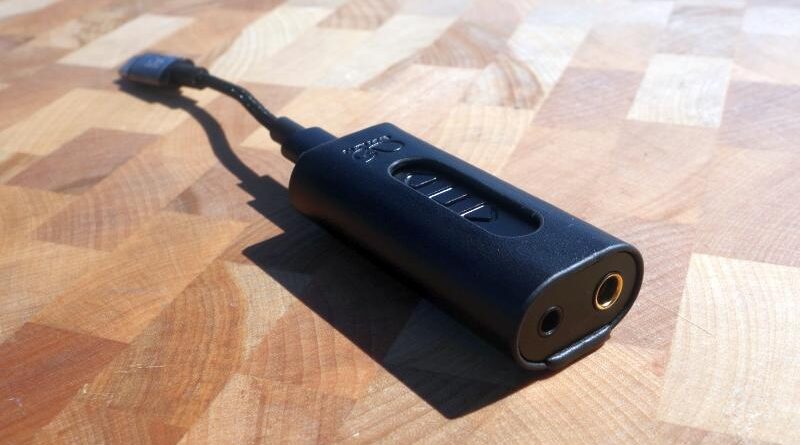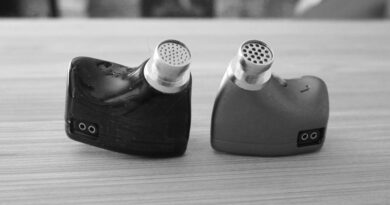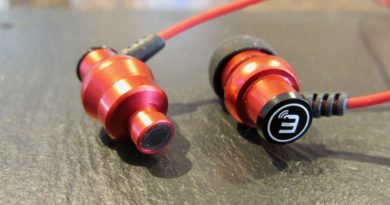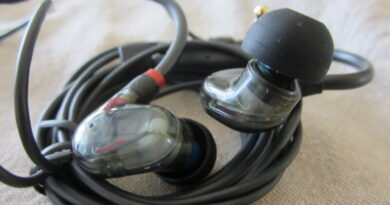Shanling UA3 Portable DAC/Amp Review – Triumphant Return of AKM
In this Article
INTRO
The Shanling UA3 is the latest iteration of a DAC dongle from Shanling the sees the re-emergence of the AKM line of DAC chips following a fire at their chip plant in 2020. The Shanling UA3 is the replacement of the UA2 (previously reviewed) and the little brother of the UA5. It utilizes the power output amp of the UA5 and includes some hardware controls to give us a more affordable dac/amp dongle offering single and balanced output for the price of $109.
GOOD TRAITS
NEEDS IMPROVEMENT
- Powerful (2x as powerful to SoC designs)
- Hardware Controls
- Detachable USB-C to USB-C cable (IOS cable sold separately)
- 3.5mm and 4.4mm balanced output
- Thicker/larger than similar dongles
SPECIFICATION COMPARISON
To start I think it’s best to have a quick comparison of the DAC lineage past and present from Shanling, the Shanling UA3 is flanked by their UA2 and UA5 models.
| Model | UA2 | UA3 | UA5 |
| DAC Chip | Single ESS9038Q2M DAC | Single AKM4493SEQ DAC | Dual ESS9038Q2M DAC |
| AMP | Single Ricore RE6863 | Dual Ricore RT6863 Amps | Dual Ricore RT6863 Amps |
| Connection | 3.5mm/2.5mm balanced | 3.5mm/4.4mm balanced | 3.5mm/4.4mm balanced |
| Controls | No hardware controls | Hardware controls (buttons) | Hardware controls/Volume Knob |
| Power Output | 125mW @32ohms/195mW @32ohms bal | 125mW @32ohms/211mW @32ohms bal | 137mW @32ohms/211mW @32ohms bal |
| Dynamic Range | 122/120db 3.5/2.5mm | 119/120db 3.5/4.4mm | 122/120db 3.5/4.4mm |
| Signal to Noise | 121/116db 3.5/2.5mm | 119/120db 3.5/4.4mm | 121/116db 3.5/4.4mm |
| Channel Separation | 76/109db 3.5/2.5mm | 80/110db 3.5/4.4mm | 77/110db 3.5/4.4mm |
| Output Impedance | 0.8/1.6 ohm 3.5/2.5mm | <0.4/<0.8 ohm 3.5/4.4mm | 0.8/1.6ohm 3.5/4.4mm |
| Digital Output | – | – | 3.5mm SPDIF coaxial digital output |
| Battery | – | – | 220mAh battery |
| Digital Filters | – | – | 7 User select-able digital filter options |
| Price | ~$80 | $109 | $235 |
| Purchase Link | amazon.com |
FEATURES
- Brand new AKM AK4493SEQ DAC
- Dual Ricore RT6863 Headphone amplifier
- Hardware Volume Control
- 3.5mm Single-ended & 4.4mm Balanced Outputs
- Standby Mode
- Up to 211mW @ 32 Ohm Output power
- Compatible with Android, Windows, Mac and iOS.
- Special lightning cable needed for use with iOS
- UAC2.0 and UAC1.0 mode compatible, for use with Nintendo Switch and other gaming systems or older devices.
- Hi-Res support up to 32/768 and DSD512
- Universal USB-C Connector
- Compatible with Eddict Player app
PACKAGE CONTENTS
- DAC
- Detachable USB-C to USB-C cable braided cloth protection
- USB-C to USB-A adapter for computer use
SOUND
Tested with LG G8 Hiby App, Kinera Idun 2.0, Moondrop Kato, Drop Sennheiser HD6xx, Oppo PM-3, Philips Fidelio X2HR
The Shanling UA3 exhibits a warmer presentation with a very even midrange treble response. It has a very organic technical prowess that gives it a vinyl like analog orientation. Compared to the Moondrop Dawn 4.4, the Shanling UA3 is flatter in the staging and depth. My desktop Liquid Spark DAC also has a similar flatter warmer sound perhaps because it is also equipped with the AKM4493 DAC chip. It’s hard to say if the sound signature is the result of the DAC chips, the output stage, or the overall design, but there is some noticeable differences.
The Shanling UA3 tends to smooth out the midrange and treble, whereas the Moondrop Dawn 4.4 adds some sharpness and definition that some might find more clinical. This helps with pairing earphones to the DAC dongle, you can either choose to accentuate certain aspects or use it as a way to balance out too much in one direction. The TempoTec Sonata E35 is different as well, it has a more midrange emphasis and a punchier bass.
So does the Shanling UA3 have enough power to drive something harder than a pair of IEM’s? The answer is yes. It really comes alive with my Oppo PM3 planars. This is actually a good pairing and seems to be a good match to low to medium impedance and singled ended output. The same can be said for the Philips Fidelio X2HR. Unfortunately I do not have a balanced cable for my Sennheiser HD6XX, so the single ended output feels a bit limited, but it is plenty of power to drive for normal listening volumes.
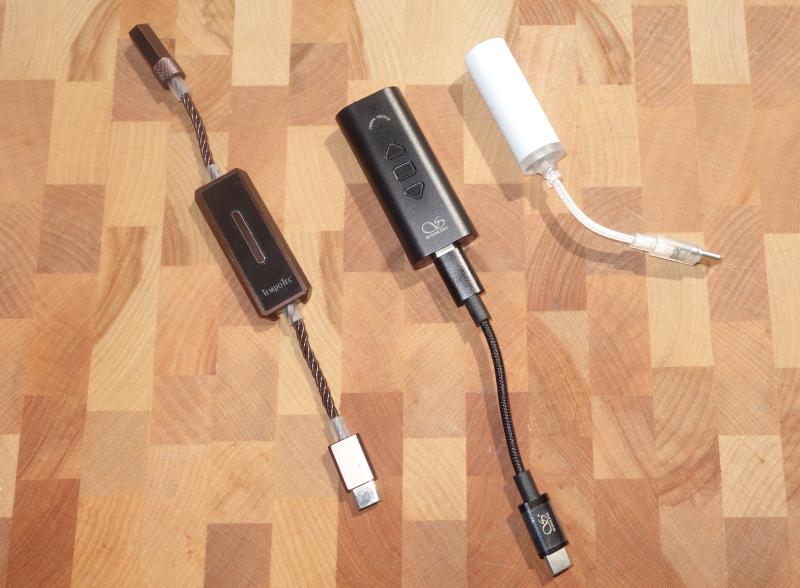
OBSERVATIONS
What I notice is that the UA3 is the only one that sees improvement in all measurements when moving from single ended 3.5mm to the balanced output mode. The other interesting thing is the Ricore opamp chips. I was not familiar with this brand and after some sleuthing on the forums it appears to be either a Chinese or Japanese supplier. Another DAC competitor felt the opamps exhibited some nasty clipping when driven too hard, however if Shanling has worked around these constraints to avoid clipping then there should be no issue in theory.
Other DAC dongles I own don’t even mention any type of opamp output stage, and are probably driven directly from the SoC DAC chips themselves. Only my desktop DAC SMSL DO100 and SMSL400 analog outputs are driven using the OPA1612, but primarily for high impedance line out voltages and not headphone low impedance loads.
As with all my DAC dongles, I have to use the Hiby App instead of Poweramp to properly interface with them on my LG G8, otherwise it doesn’t deliver bit perfect output and tends to either resample to 48khz or suffers a power limitation. Shanling also supports it with their own Android app called Eddict Player.
There is also one feature on the Shanling UA3 to toggle it to USB mode 1.0 for use with other devices such as the Nintendo Switch. My son is the Switch player, so I must admit this was not really on my radar for a DAC/dongle use but I am sure there are some gamers in reader population that will find this a nice feature.
For those that are interested in DSD support, the Shanling UA3 also supports up to 768khz 32bit DSD512. Drivers are required it using on a PC or MAC. The LED changes color to indicate sampling rate frequency and the mode it is in. Unfortunately, several sampling rates are shared among the 4 colors, I would prefer to see it indicate multiples of the base frequency I.e 44.1/88.2Khz vs 44.1/48khz as there is more damage done to the audio when resampling from 44.1 to 48khz vs upsampling to a multiple of the original content. I get it though, just my weird preference pet peeve and not really a big deal how to use the indicator light.
Lastly, Shanling offers a leather case protector accessory for the Shanling UA3 (appears to be included for a limited time from their Aliexpress store). It slips right in and still gives you easy access to the buttons and connections while offering a classy look. It can be purchased separately for $15 from the Shanling Aliexpress store or participating retailers and distributors once the promotion ends. I recommend the case if you plan on using the dongle in your pocket to protect from accidental button pushes.
CONTROLS
The controls on the Shanling UA3 are somewhat limited since the up/down buttons control volume control but not track up/down. This is typical of all the dongles I have in my possession but it is worth noting. The middle button is used for play/pause, or toggling volume control between software and hardware modes. It also switches it to UAC 1.0 mode for systems (i.e. Nintendo Switch) that do not support UAC2.0 when holding the button and plugging in to power it on.
FINAL REMARKS
It’s nice to see AKM back in the game and to have the Shanling UA3 utilize the mobile DAC chip AKM4493SEQ to bring us dongle users a warmer and smooth sounding portable DAC/amp. It’s a great option for those looking for a DAC dongle that combines single and balanced output options into a single device that is powerful enough to drive even the Sennheiser HD6XX to a legitimate listening level, but is still better suited for 150-200 ohm or less headphones.
DISCLAIMER
Get it from the Shanling Store on Aliexpress or amazon.
Our generic standard disclaimer.



